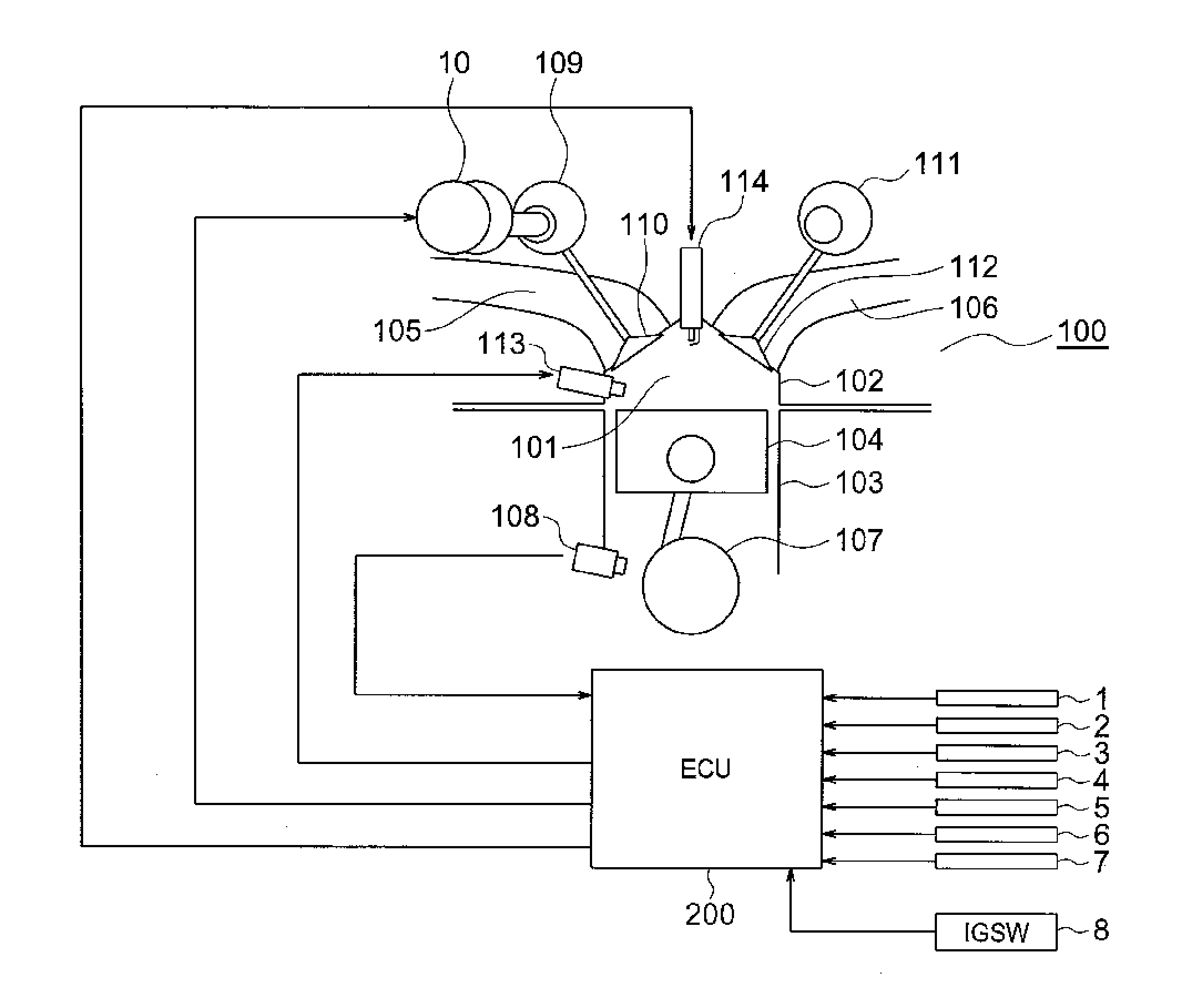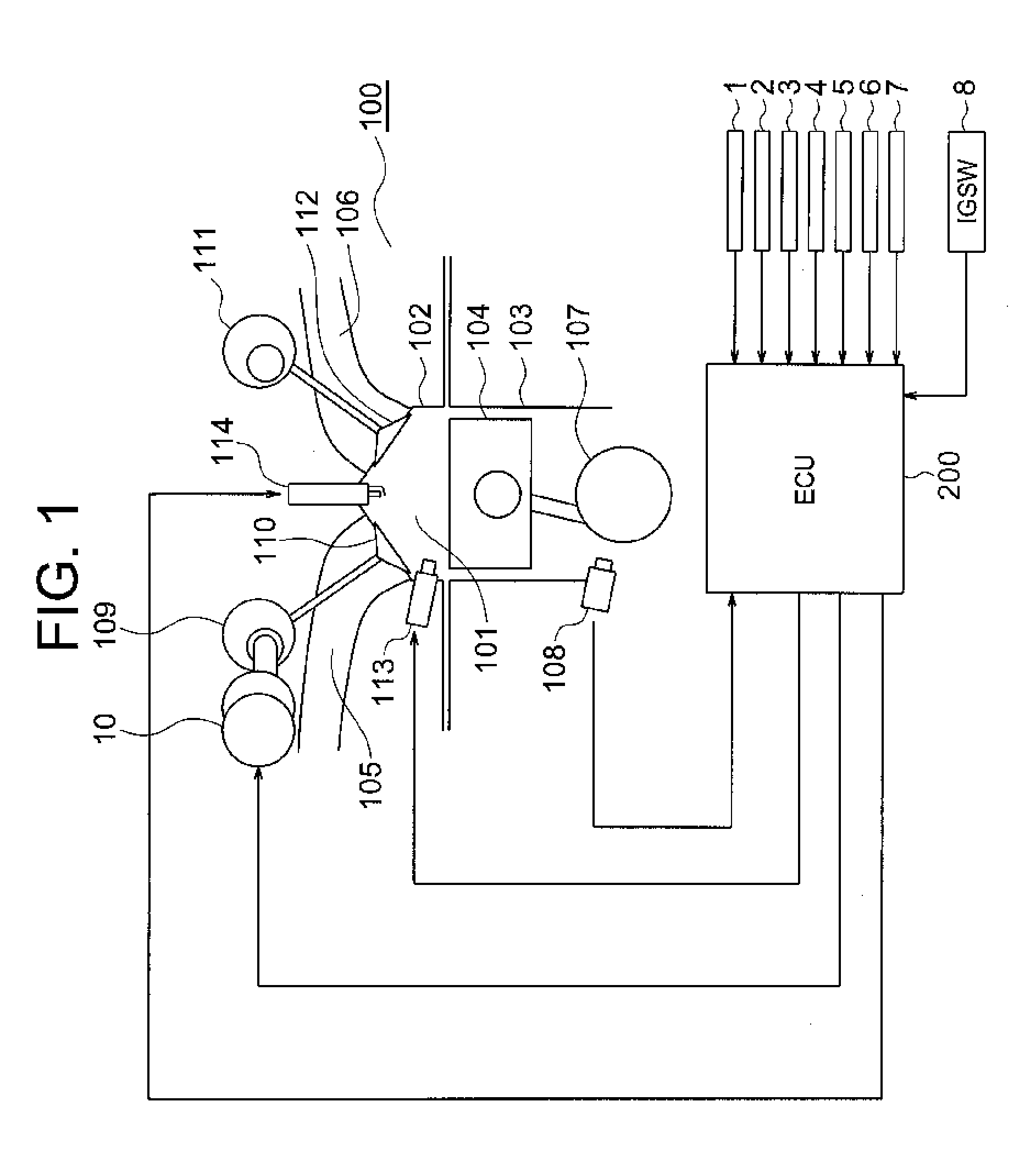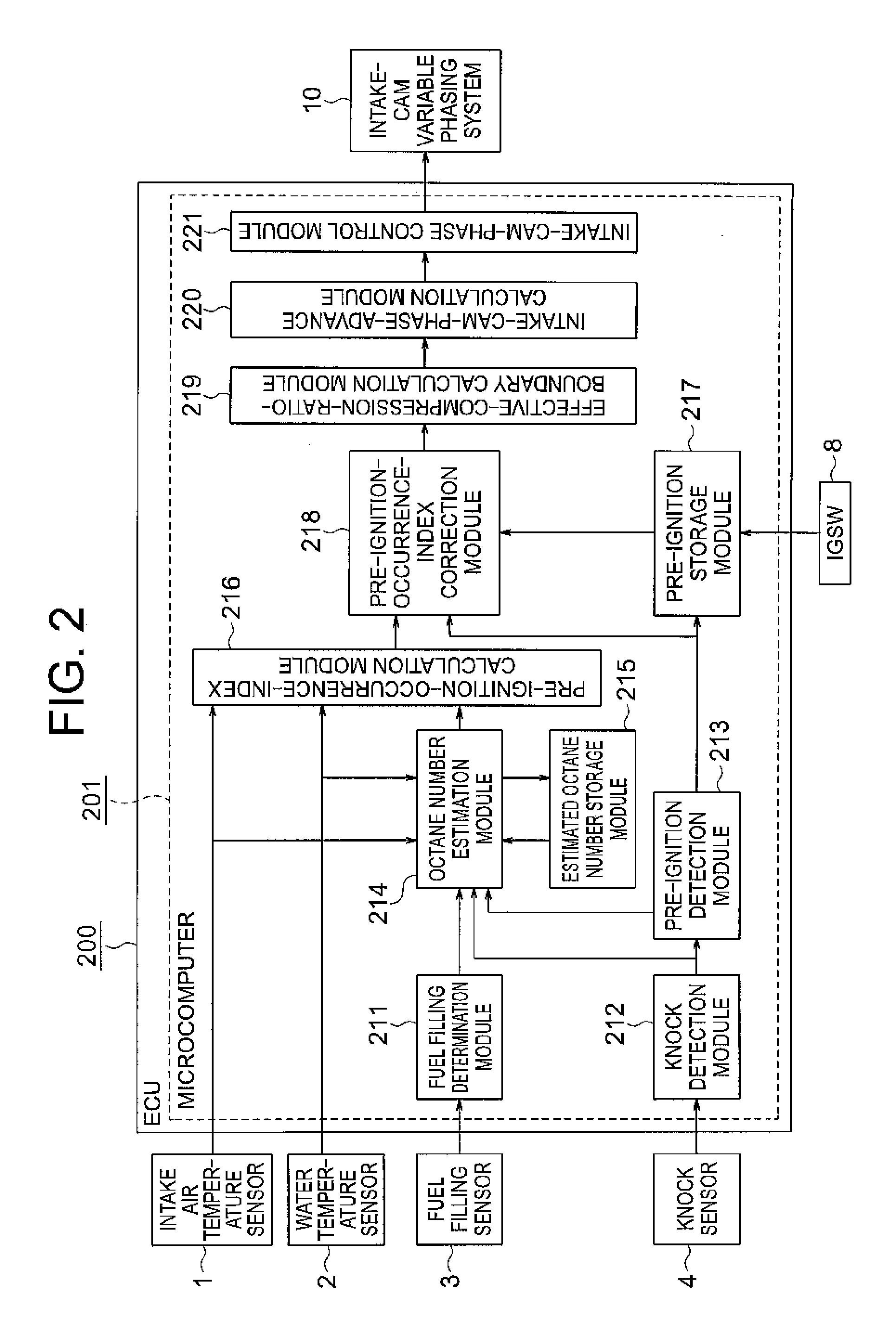Pre-ignition estimation/control device for an internal combustion engine
a technology of estimation/control device and internal combustion engine, which is applied in the direction of electric control, machines/engines, instruments, etc., can solve the problems of internal combustion engine may finally become no longer operable, noise and vibration, and noise and vibration, and achieve indirect restriction of the effect of effective compression ratio
- Summary
- Abstract
- Description
- Claims
- Application Information
AI Technical Summary
Benefits of technology
Problems solved by technology
Method used
Image
Examples
first embodiment
[0033]Referring to FIGS. 1 to 14, a description is given of the pre-ignition estimation / control device for an internal combustion engine according to a first embodiment of the present invention. FIG. 1 is a diagram illustrating a schematic configuration of the internal combustion engine according to the first embodiment of the present invention. It should be noted that like and corresponding components are denoted by like numerals throughout the drawings in the following section.
[0034]In FIG. 1, a combustion chamber 101 of an internal combustion engine 100 is constructed by a cylinder head 102, a cylinder block 103, and a piston 104.
[0035]Further, an intake port 105 and an exhaust port 106 are connected to the combustion chamber 101, and the intake port 105 and the exhaust port 106 are formed on the cylinder head 102.
[0036]A crank shaft 107 is connected to the piston 104, and the crank shaft 107 is rotated by a vertical motion of the piston 104. A crank plate (not shown) is attached...
PUM
 Login to View More
Login to View More Abstract
Description
Claims
Application Information
 Login to View More
Login to View More - R&D
- Intellectual Property
- Life Sciences
- Materials
- Tech Scout
- Unparalleled Data Quality
- Higher Quality Content
- 60% Fewer Hallucinations
Browse by: Latest US Patents, China's latest patents, Technical Efficacy Thesaurus, Application Domain, Technology Topic, Popular Technical Reports.
© 2025 PatSnap. All rights reserved.Legal|Privacy policy|Modern Slavery Act Transparency Statement|Sitemap|About US| Contact US: help@patsnap.com



